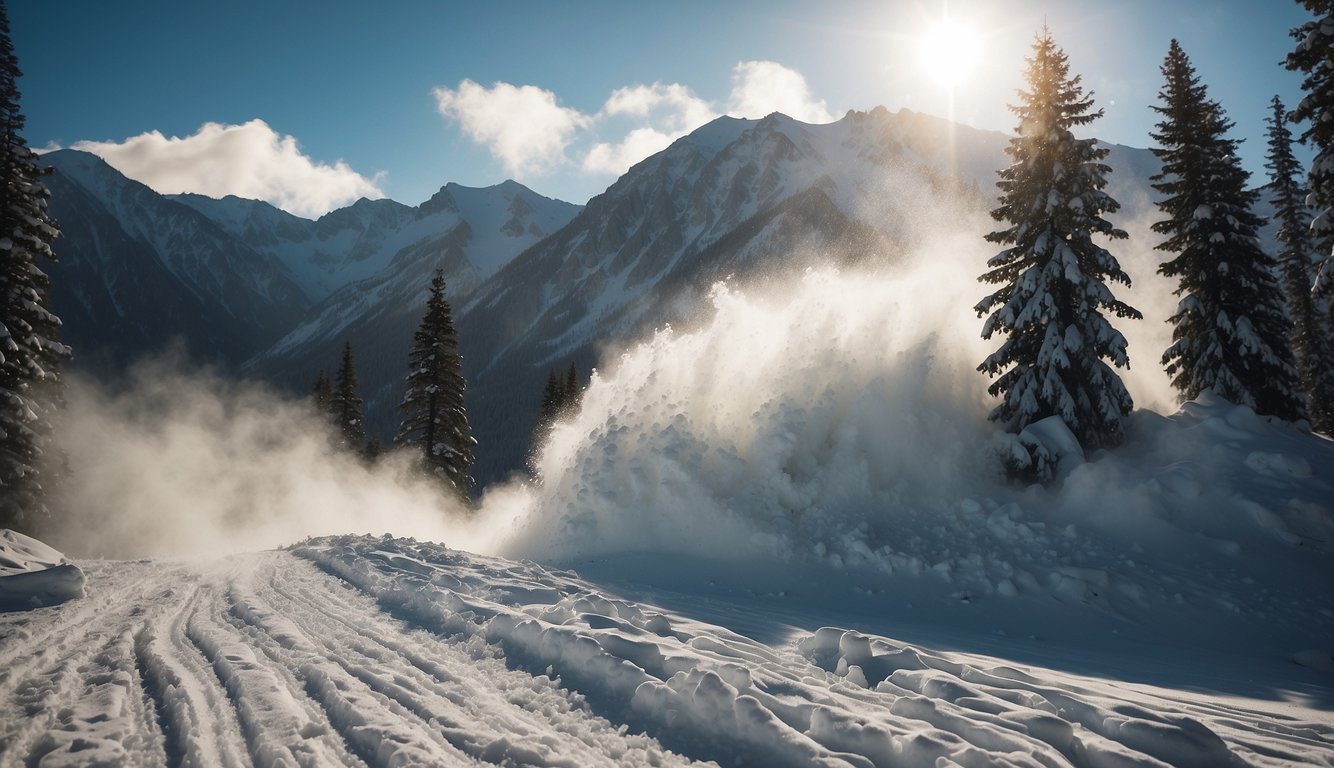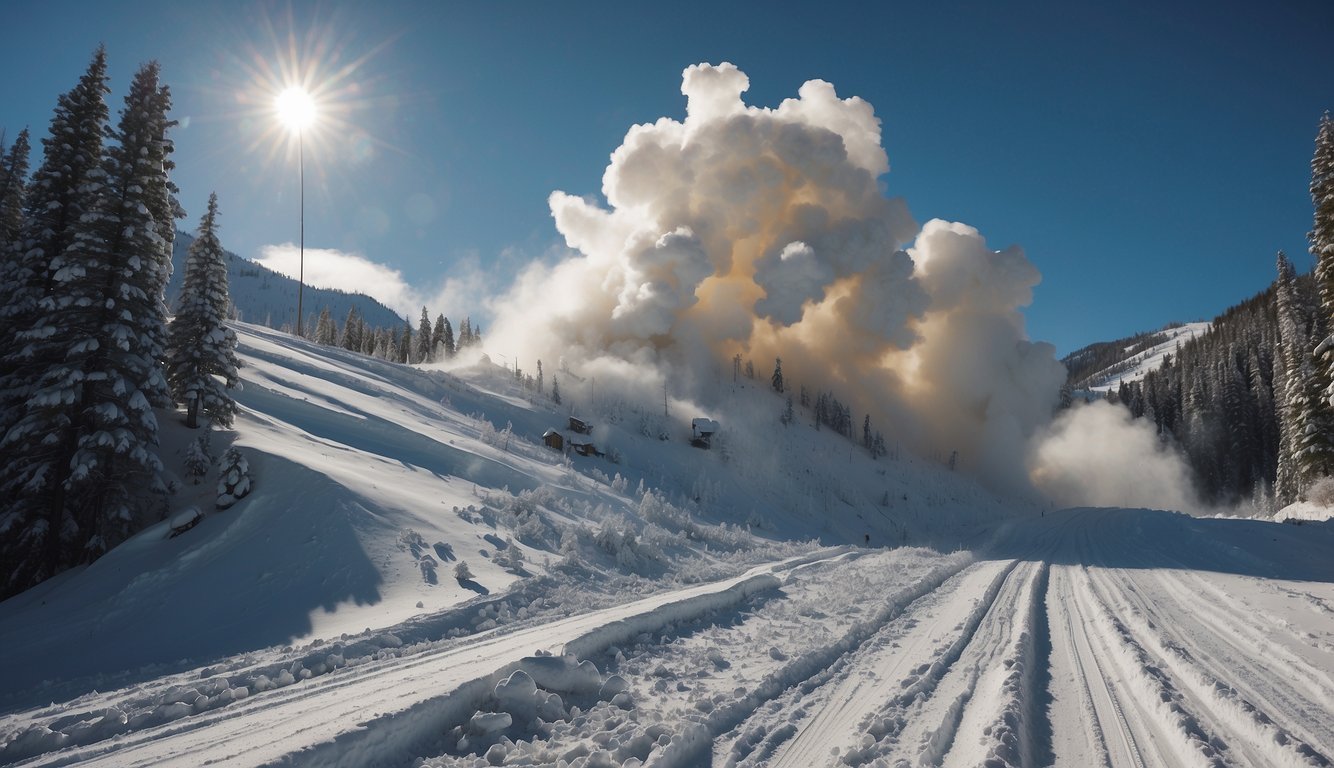Documentary Review: Buried: The 1982 Alpine Meadows Avalanche (2023)
A Gripping Retelling of a Tragic Event
The documentary "Buried: The 1982 Alpine Meadows Avalanche" provides a haunting look into the devastating avalanche at the Alpine Meadows Ski Resort in Lake Tahoe, California. Directed by Jared Drake and Steven Siig, this film meticulously unravels the tragic event that left a community reeling. Focusing on the harrowing rescue efforts and the emotional aftermath, this documentary is a poignant exploration of human resilience and the powerful forces of nature.
Featuring interviews with survivors and archival footage, "Buried" offers a visceral experience that brings the past to life. Viewers are introduced to key players who recount their painful memories, providing raw and intimate snapshots of a community's struggle to heal. The directors skillfully balance the technical aspects of the avalanche with heartfelt personal stories, creating a gripping narrative.
The film's depth lies in its ability to connect the audience with both the natural phenomena and its human impact. It serves not just as a historical recount but as a moving testament to the enduring strength of the human spirit in the face of overwhelming adversity.
Background on the Alpine Meadows Avalanche
The Alpine Meadows avalanche of 1982 was a devastating natural disaster that struck the Lake Tahoe area, resulting in significant loss of life and property. Buried: The 1982 Alpine Meadows Avalanche documentary captures these events through the stories of those who experienced it firsthand.
Historical Context of the 1982 Avalanche
On March 31, 1982, a massive avalanche occurred at Alpine Meadows Ski Resort in California. This catastrophic event resulted in the deaths of seven individuals and triggered a desperate search for survivors.
The occurrence of this avalanche was part of a broader weather system that had battered the region with heavy snowfall and high winds. This combination of factors created the perfect conditions for the deadly avalanche. Key players involved in the rescue and recovery efforts, including skiers and avalanche forecasters, faced incredible challenges amid nature's overwhelming force.
Geographical Setting
Alpine Meadows is situated in the Tahoe National Forest near Lake Tahoe, California. This region is known for its steep mountainous terrain and significant snowfall, making it a popular destination for winter sports enthusiasts.
The topography of Alpine Meadows includes several high-risk zones for avalanches due to its sharp slopes and heavy snow accumulation. The avalanche in 1982 originated from one of these high-risk areas, descending rapidly towards the ski resort's base, demonstrating the volatile natural conditions that define the region.
Overview of the Documentary
"Buried: The 1982 Alpine Meadows Avalanche" explores the tragic events of the devastating avalanche through compelling storytelling and detailed personal accounts. The documentary offers insights into the production, the filmmaking techniques used, and the key personalities featured.
Production Details
Directed by Jared Drake and Steven Siig, the documentary was released in 2021. Both directors are locals of the area, adding an authentic touch to the narrative. The film was produced by XTR and Sacha Gervasi, ensuring high production values.
Filming locations include the actual site of the Alpine Meadows avalanche, giving it an immersive and realistic feel. Archival footage from the 1982 event integrates seamlessly with contemporary interviews, making for a gripping viewing experience.
Filmmaking Techniques
The filmmakers use a blend of archival footage, re-enactments, and interviews. This combination helps to recreate the event's intensity and emotional impact.
The use of drone shots captures the vast, treacherous landscape, highlighting the magnitude of the avalanche. Sound design plays a crucial role, with ambient noises adding to the tension and realism.
Visual storytelling is enhanced with on-screen text and graphics, providing context and statistics without overwhelming the viewer. These methods ensure the content is both informative and engaging.
Key Personalities Featured
The documentary features firsthand accounts from survivors, rescuers, and locals deeply affected by the avalanche. Individuals like Anna Conrad Allen and former avalanche forecaster Jim Plehn share their harrowing experiences and personal losses.
Rescue personnel, such as Mike Alves and Tom Burt, recount the challenges they faced during the rescue mission. The directors themselves appear, offering insights into the community's enduring resilience and the importance of avalanche awareness.
Experts in avalanche forecasting also contribute, shedding light on the unpredictable and dangerous nature of alpine environments. Their input emphasizes the necessity of safety measures in such conditions.
Themes and Narratives
"Buried: The 1982 Alpine Meadows Avalanche" explores several themes, such as survival, human resilience, the unpredictability of nature, and the aftermath of a catastrophic event. The documentary combines archival footage and firsthand accounts to immerse viewers in these gripping narratives.
Survival and Human Resilience
One of the most compelling elements is the focus on individual and collective efforts to survive and rescue others. The survival stories of those caught in the avalanche highlight immense physical and emotional endurance. They faced extreme conditions, but their determination to survive and help others showcases human resilience at its finest. This theme underscores that, despite nature's formidable force, the human spirit can persist through adversity.
Nature's Unpredictable Force
The documentary poignantly illustrates nature's uncontrollable and often violent temperament. The Alpine Meadows avalanche, triggered by a massive storm, serves as a stark reminder of how sudden and devastating natural events can be. Detailed depictions of the snowstorm and avalanche provide a visceral experience, emphasizing the sheer power and unpredictability of natural disasters. This narrative emphasizes the need for respect and preparedness in the face of nature's forces.
The Aftermath and Recovery Process
In the wake of the avalanche, the documentary shifts focus to the rescue and recovery operations. The immense challenges faced by the rescue teams are thoroughly explored, from digging through the snow to locating survivors. The long-term impact on the community and the personal traumas of those involved are also discussed. This section lays bare the arduous journey from chaos to healing, spotlighting the fortitude required to rebuild and recover.
Each thread in this documentary weaves a tapestry of survival, respect for nature, and the profound effects of disaster on a community. The narratives are meticulously crafted to provide a comprehensive and engaging view of one of the most significant avalanches in American history.
Critical Analysis
The documentary "Buried: The 1982 Alpine Meadows Avalanche" skillfully explores the catastrophic event through its storytelling techniques, stunning visuals, and impactful sound design. Each element contributes to a compelling narrative that deeply engages the audience.
Documentary's Approach to Storytelling
"Buried" employs a mix of archival footage and interviews with survivors to provide an authentic and immersive experience. The absence of voice-over exposition allows the real-life participants' narratives to stand out, making the viewing experience more compelling.
Viewers are given a personal connection to the tragedy through first-hand accounts, deepening the emotional impact. The structure of the documentary, with its careful pacing and methodical recounting of events, ensures that the gravity of the disaster is fully conveyed.
Cinematography and Visuals
The film makes exceptional use of both modern and archival footage to recreate the 1982 avalanche. The visual representation of the avalanche, coupled with high-quality recreations, brings the events to life with striking realism.
The contrast between historical footage and modern interviews creates a visual timeline. This approach helps the audience better understand the scale and devastation of the avalanche while paying respect to those affected.
Sound Design and Scoring
"Buried" uses sound design to heighten the tension and emotional weight of the documentary. The roar of the avalanche and the subtle ambient sounds during interviews capture the chaos and aftermath effectively.
The score enhances the narrative without overwhelming it. The music complements the visuals, helping to maintain the documentary's tone. The combination of sound effects and music enriches the storytelling, making it a powerful aspect of the film's overall impact.
Public and Critical Reception
The reception of "Buried: The 1982 Alpine Meadows Avalanche" has been notable among both viewers and critics, highlighting the documentary's emotional impact and comprehensive storytelling.
Viewer Response
Viewers have expressed a strong emotional reaction to the documentary. Many praised the film for its ability to convey the magnitude of the tragedy and the resilience of those affected. Comments on various platforms indicate that the personal stories shared in the documentary struck a chord with audiences.
Some viewers shared that they were unaware of the true dangers of avalanches before watching the film. Several mentioned how the documentary helped them comprehend not just the physical but also the emotional aftermath of such natural disasters. The detailed recounting of events was particularly appreciated, making the narrative gripping and poignant.
Critical Reviews
Critics have largely commended "Buried: The 1982 Alpine Meadows Avalanche" for its thorough and respectful treatment of the subject. Reviews highlight the directors' success in balancing factual recounting with personal stories, thus providing a well-rounded perspective on the event. The documentary's structure, moving between the chaos of the avalanche and the heart-wrenching rescue efforts, has been noted as a strong point.
Publications like Rotten Tomatoes and IMDb praised the film's minute-by-minute account of the avalanche, emphasizing the bravery and dedication of the rescuers. The high-quality production and compelling storytelling have earned it a favorable score from critics, with specific accolades directed at its haunting yet hopeful narrative arc.
Cultural and Educational Impact
"Buried: The 1982 Alpine Meadows Avalanche" delivers deep insights into the harrowing events of the 1982 disaster and its subsequent influence on both avalanche safety protocols and historical preservation.
Influence on Avalanche Safety and Awareness
The documentary played a significant role in heightening awareness about avalanche dangers. By showcasing real-life stories and the rescue efforts, viewers gain a profound understanding of the risks involved in snow sports.
It highlighted the importance of preparedness and proper training for ski patrol teams. The film's vivid depictions of the rescue operations underscore the necessity for advanced equipment and protocols in avalanche-prone areas.
A key takeaway is the need for continuous education and awareness campaigns. The tragic events of 1982 serve as a critical learning point for both professionals and recreational skiers.
Preservation of Historical Memory
This documentary serves as a poignant reminder of those affected by the Alpine Meadows avalanche. By interviewing survivors and witnesses, it ensures that this event remains a vital part of local history.
Personal stories and archival footage help humanize the event, creating a lasting emotional connection with the audience.
The film also acts as a historical record, preserving details that might otherwise be forgotten. This preservation effort is crucial for educational purposes, allowing future generations to learn from past tragedies and understand the impact of natural disasters on communities. The documentary has thus become a significant cultural artifact, encapsulating both the sorrow and resilience of those involved.
Conclusion
"Buried: The 1982 Alpine Meadows Avalanche" is a well-crafted documentary that captures a significant historical event.
Through its use of modern and archival footage, it brings depth to the tragedy and helps viewers connect emotionally with the survivors and their shared experiences.
The film effectively conveys the power of nature and the emotional toll of the disaster on those involved.
Interviews with survivors and witnesses add a personal dimension, enhancing the narrative's impact without overshadowing the factual recounting of the events.
The documentary provides a balanced mix of emotional and informative content.
This makes "Buried: The 1982 Alpine Meadows Avalanche" both a poignant exploration of human resilience and a meticulous recounting of a catastrophic event.
It speaks to both the personal and collective memory, ensuring that the events of March 31, 1982, are remembered and understood.


